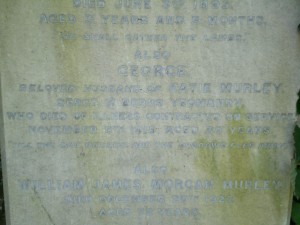George Murley
Lance Sergeant 70165
Depot Berkshire Yeomanry
Division 35
 |
 |
George Murley was educated at Kendrick School, and later at Ardingley College, Sussex. The good news that his wife, had delivered a daughter, Katie, was announced on February 16th 1917. The family lived at The Gables, Upper Redlands Rd. He was the youngest son of Mr and Mrs William James Murley of 87, London St., Reading.
George joined the Yeomanry some time before the war, and on the outbreak of hostilities volunteered for foreign service.
He was sent to Egypt, and was stationed for some time in Cairo, where he met with an accident, his horse throwing him and he broke his ankle which necessitated his return to England. He was thus unable to go to Gallipoli with his regiment. On regaining some fitness he was given clerical employment at Yeomanry House, and afterwards was transferred to Canterbury. Ordered in October 1918 to take a draft of men to Ireland he got wet through and caught a severe chill, and on returning to Reading, where his young wife was living, he found he was too ill to proceed back to Canterbury. He was taken to Wilson Hospital on the Saturday, suffering form pneumonia, and died on the Tuesday. At the time his father was also lying seriously ill. He was given a military funeral.
He was 30 and prior to the war worked in his fathers business. His papers were through for a commission and he would have been gazetted on the 26th November 1918, he died on 5th November 1918. His is aregistered war grave but with a headstone chosen by the family rather than the portland stone war pattern headstone.
